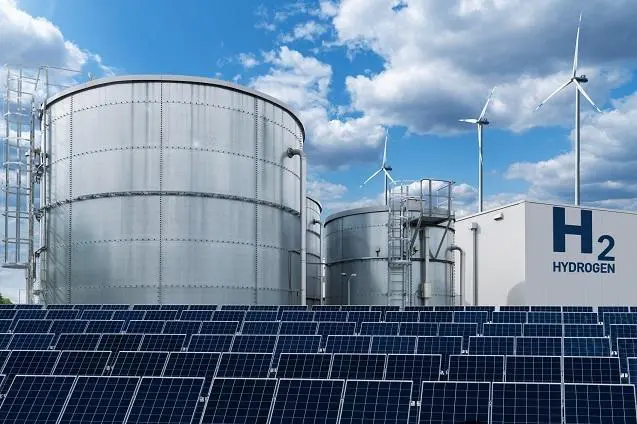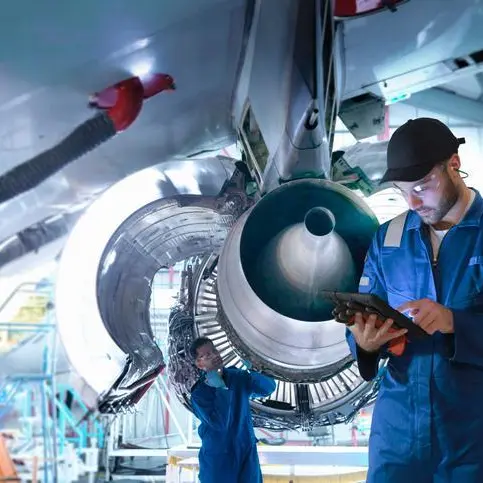PHOTO
Lack of regulatory clarity on the definition of green hydrogen, complexities in structuring contracts due to multiple off-takers and nascent financial support mechanisms in different jurisdictions are top hurdles to financing offtake contracts for green hydrogen and derivatives, according to an expert panel speaking at a webinar organised by Project Finance International (PFI).
Allan Baker, Head of Energy & Group EMEA, Societe Generale, said these and other challenges would moderate the pace of developments and permit only a select number of projects to go ahead, while others wait until the market establishes to take FID (Final Investment Decision).
He said banks have not been very forthcoming to finance projects on the back of the carbon tax due to the "volatile and political nature" of those mechanisms.
He stated that the oversubscription of NEOM's non-recourse financing indicates huge liquidity chasing very few realistic projects.
"Several developers come to us with this 'build it, and the off-takers will come' approach. It's very difficult to finance major infrastructure projects on the back of a forward-looking market development story, but we are seeing things moving relatively quickly for projects with domestic supply," he noted.
He said in Germany, Korea, Japan, and the UK, governments have decided to provide subsidies to enable the development and supply of local demand, giving rise to interesting support structures for offtake.
Baker also highlighted that several projects might be underestimating the supply chain woes, which should worry the finance community.
Structuring contracts
On structuring hydrogen offtake contracts, Dan Felman, Partner at legal firm King and Spalding, said hydrogen contracts differ from LNG/oil contracts as the regulatory definition of hydrogen drives the product value, and that differs with each jurisdiction.
"To create hydrogen or ammonia that qualifies under these definitions, the entire structure of the project, including the way in which you set up your electricity system, backup power systems, the use of water, and the carbon intensity of every stage of the process, needs to be considered. This means the structuring of the project will depend on the target market and users so that it is no more expensive or difficult to make than is necessary for the off-taker," he said.
He noted that having a good grasp on the regulatory definition is important because "if you structure a project extensively to make the greenest possible hydrogen and if the definition gets easier to meet, cheaper projects will undercut it."
Felman says NEOM provides a precedent, but future projects will be structured differently. "Some projects will have multiple off-takers, which drives other complexities and considerations that need to be taken into account on a project-to-project basis".
But he expects some clear market principles on contract structuring to be in place very soon.
Citing another challenge, he says banks are uncomfortable with merchant offtake risk. "They (banks) want to see locked-in demand and revenue and a 'take or pay' type of structure, at least for sufficient quantities to cover the debt. It will be an essential part of every project as it was for LNG."
He continued: "Offtake contracts are largely being signed by aggregators of demands, who are encountering difficulties in getting downstream purchasers to commit because of mixed messaging regarding regulations, incentives, and definitions of hydrogen.
In many cases, committed demand will not be there until 2030 as downstream off-takers wait for clarity to emerge. We will not see bankable merchant offtake for green and clean hydrogen or ammonia projects well into the 2030s.”
European Hydrogen Bank
The European Union, a key market for hydrogen and related products, announced some important support mechanisms recently, setting up a European Hydrogen Bank to financially support early-stage projects being one of them.
The Bank will hold its first auction this autumn and pay a fixed premium per kilogramme of hydrogen produced for a maximum of 10 years of operation.
Greg Paulick, Director of Intelligence at Hydrogen Europe, said they have high hopes for the pilot instrument. However, the auction value of €800 million will not make a difference given the target.
"Considering it's a 10-year contract with a €4.00 per kilogramme maximum premium, we can hope to get 20,000-50,000 tonnes or a quarter of one NEOM project. It's not a big game changer," said Paulick.
He said he hopes it will be followed with bigger budgets and better-structured auctions to supply more ambitious projects with higher demand.
He observed that the subsidies given so far in Europe have been for capital expenditure, but costs for green hydrogen-based projects are mainly operating expenditure, which translates to a funding gap.
"Even with a 100 percent capex subsidy on electrolysers, it might not be enough. You need operational support, and that's something we have high hopes for in future auctions".
He pointed out that the pilot instrument is not linked to any reference price, but that could change in the future.
"The European Commission might want to link the subsidy to some reference price. Whether it is the Emission Trading System carbon price or the market price of grey hydrogen or natural gas price remains to be seen. Still, the objective is to develop this instrument from a fixed premium to a contract for difference."
(Reporting by Sowmya Sundar; Editing by Anoop Menon)





















